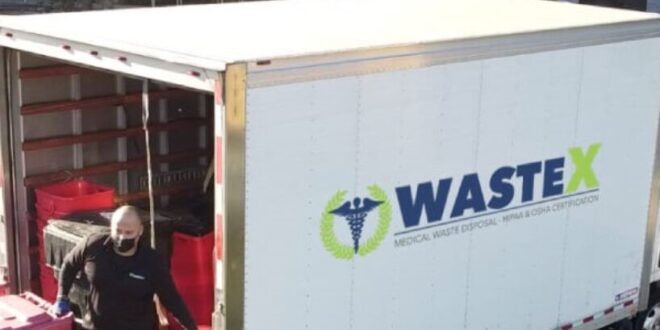Beneath the sterile surface of hospitals and healthcare facilities lurks a hidden and often invisible danger: biohazardous waste. These seemingly innocuous items, once touched by the hand of infection, can unleash a silent storm of harm. Yet, for many working in healthcare, understanding and managing biohazardous waste remains a challenge. It aims to shine a light on this silent threat, providing healthcare professionals with the knowledge and practical strategies needed to effectively tame the storm and safeguard the health of both personnel and patients.
Building a Wall of Defense: Segregation and Labeling
The first line of defense lies in segregation. Like sorting laundry, biohazardous waste must be separated from general waste at the point of generation. Sharps containers for needles, red bags for infectious materials, and designated bins for laboratory waste – each plays a crucial role in keeping the contaminated contained. Clear labeling becomes the shield, ensuring everyone recognizes the danger within and handles it accordingly.
Fortress of Containment: Choosing the Right Containers
Not all containers are created equal. Choosing the right ones for biohazardous waste disposal is vital. Puncture-resistant sharps containers for needles, leak-proof biohazard bags for liquid waste, and sturdy containers for pathological waste each type serves a specific purpose. Regular checks for cracks, tears, or leaks become vigilance patrols, ensuring the fortress remains secure.
The Final Stand: Safe and Compliant Disposal
The ultimate act of defense is proper disposal. Healthcare facilities must partner with licensed waste disposal companies that adhere to strict regulations. Incineration, autoclaving, and chemical treatment are some methods used to neutralize the threat. Documentation becomes the final record, ensuring proper traceability and accountability throughout the disposal process.
Training and Drills: Equipping the Troops
Knowledge is the soldier’s weapon. Comprehensive training for all healthcare personnel on biohazardous waste identification, segregation, handling, and disposal is crucial. Regular drills simulate real-world scenarios, testing preparedness and refining response mechanisms. Building a culture of safety through continuous education and engagement keeps everyone vigilant and on their toes.
Technology as an Ally: Embracing Innovation
The fight against biohazardous waste isn’t solely waged with physical tools. Smart waste management systems and tracking technologies can be powerful allies. Barcoding and RFID tagging containers allows for real-time monitoring and streamlined disposal processes. Digital training platforms and online documentation enhance accessibility and ensure everyone is up-to-date on best practices.
Beyond the Walls: Community Engagement and Transparency
Biohazardous waste management isn’t an isolated battle. Open communication and community engagement are vital. Educating patients and the public about proper disposal of household medical waste, like used syringes or expired medications, reduces the burden on healthcare facilities and minimizes environmental risks.
Remember, taming the silent storm of biohazardous waste requires a multi-pronged approach. By equipping ourselves with knowledge, adopting safe practices, and embracing innovation, we can create a healthcare environment where both patients and personnel can breathe easy, knowing the invisible threat is under control. So, let’s march forward, united in our commitment with WasteX Biohazardous waste disposal to safety and well-being, and leave the storm of biohazardous waste in the dust.
Conclusion: A Shared Responsibility for a Safer Future
Biohazardous waste may be an unseen threat, but its potential consequences are far from invisible. From the dangers of infection to the risks of environmental contamination, the proper management of this silent enemy is crucial for safeguarding the health and well-being of individuals and communities.
The articles presented here have shed light on the nature of biohazardous waste, its diverse forms, and the critical role each player in the healthcare ecosystem plays in its containment and disposal. It’s a shared responsibility, a collective effort that requires vigilance, knowledge, and unwavering commitment to safety.
 HammBurg Be informed with latest news, reviews, entertainment, lifestyle tips, and much more.
HammBurg Be informed with latest news, reviews, entertainment, lifestyle tips, and much more.




